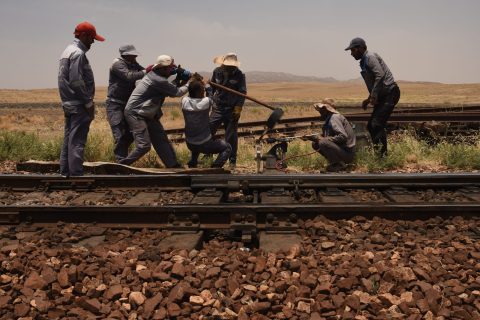Hupac launches railway service for European chemicals to China

Hupac is setting up a new cross-border liquid cargo service between Europe and China. The rail freight line is specifically designed for the chemical industry in Europe and runs to the Chinese city of Lanzhou via the main Eurasian route, Belarus-Russia-Kazakhstan.
The intermodal operator is carrying out the project together with VTG AG, which provides the tank containers and China Rail, which is doing the traction in China. Moreover, it has partnered up with the Chinese e-commerce platform Factoryhood.com, where customers can place the order for the liquid cargo.
Hurdles on the rails
“The intention is to make this a regular service”, says Alberto Grisone, director development Russia & CIS Countries at Hupac. However, the journey is one with many hurdles, as the transport of chemicals comes with many prerequisites, especially in China, he explains.
“Every product sent needs a ‘non-dangerous goods’ certificate and a shipping permit before it can be shipped to China. This is a long, bureaucratic process. Acquiring the shipping permit can take between four to six weeks. But this is something we are currently working on with China.”
Attractive transit times
Taking away the bureaucratic hurdles is exactly what the partners are working on to make this a dedicated rail freight service because, in essence, the transit times are very attractive. By using the main route on the New Silk Road, the journey takes around three weeks.
“We are also shipping chemicals via Mongolia. This is beneficial for certain destinations, but not all, and the route is less flexible due to capacity limitations”, says Grisone. In Europe, the chemicals are collected in Ludwigshafen, Germany. “But we have also sent out a shipment from Warsaw. Currently, a train with sixteen units is on the way to China”.
Dangerous goods
Another route that Hupac currently uses is via the Russian port of Vladivostok. “This is specifically interesting for the dangerous chemical goods, as those are still not permitted in overland transport through China.” The Russian port lies close to the border with China.
Moreover, Vladivostok also serves as a transhipment hub for further transport to Japan, Korea and Taiwan, Grisone continues. “We are doing many dangerous goods shipments to Taiwan, and we have already sent hundreds of tank containers via this route.”
Although the route is a functional alternative for the shipment of dangerous goods, Grisone would rather see the route through China open up for this type of cargo. “The route through Vladivostok is longer in eastbound direction.” Currently, China is banning rail transportation of dangerous goods, and negotiations have been ongoing for the past years. “We are still in talks with China. Hopefully, they open the route very soon.”
Also read:
- Bulk of electric cars produced in China, but still not moved by train
- Geely Holding urges China to finally lift the ban on dangerous goods
You just read one of our premium articles free of charge
Want full access? Take advantage of our exclusive offer






